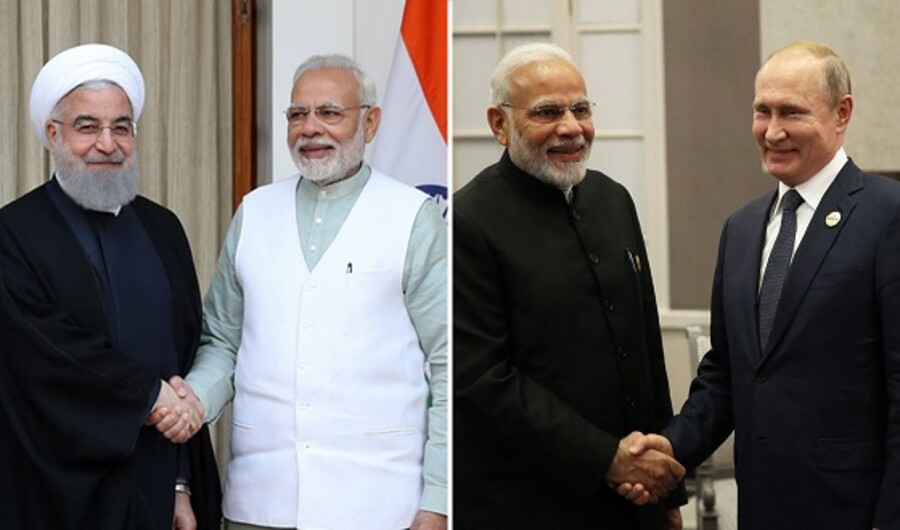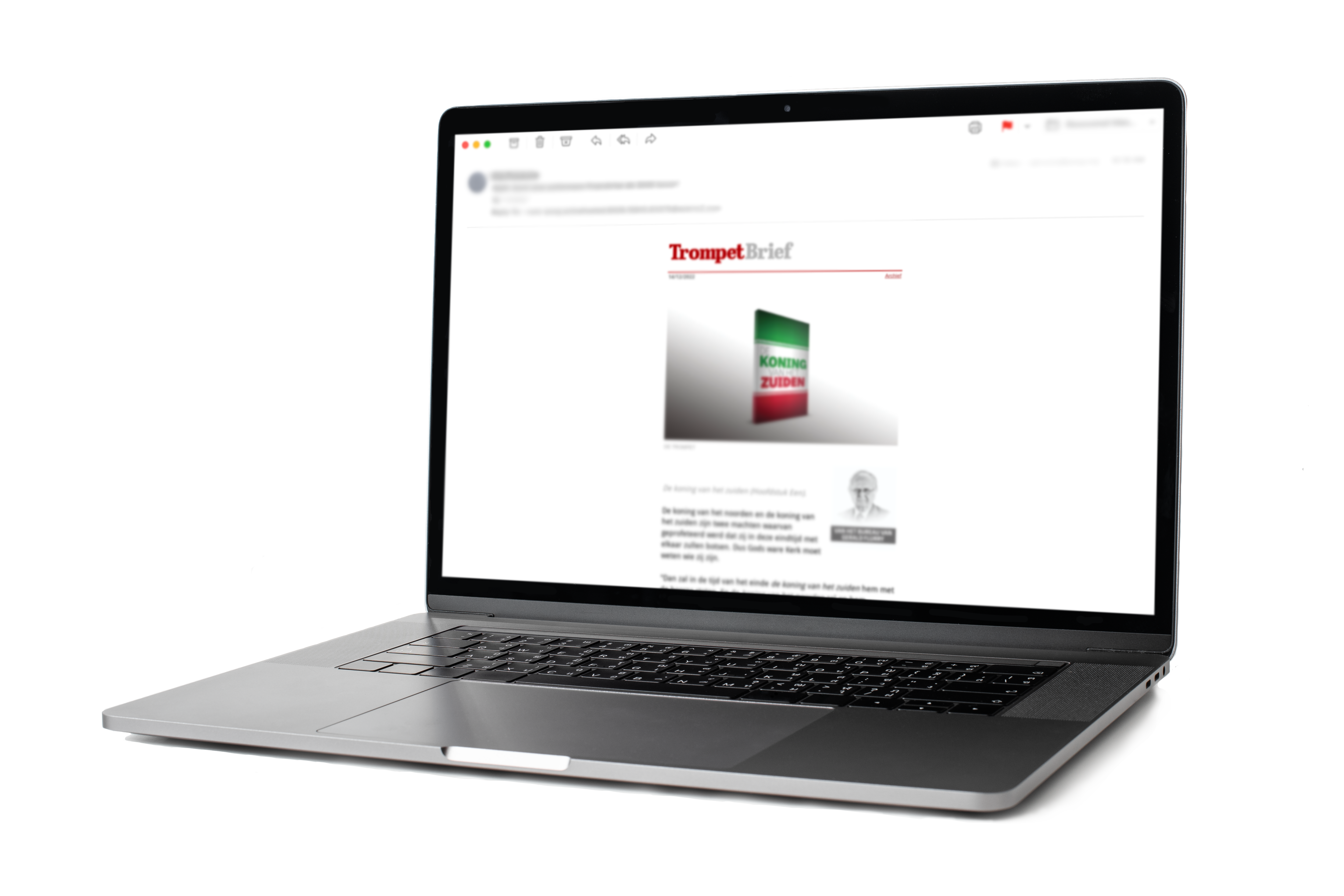
MIKHAIL SVETLOV/GETTY IMAGES, IRANIAN PRESIDENCY - HANDOUT/ANADOLU AGENCY/GETTY IMAGES
India’s Deals With Iran and Russia Defy U.S. Sanctions
India’s central government has granted permission for state refiners to continue imports of Iranian oil despite United States sanctions, Reuters reported on September 3. The move closely follows India’s decision to proceed with a major weapons purchase from Russia, despite U.S. sanctions against such transactions.
These deals show that India may be preparing to pivot away from the U.S.
India’s decision to continue importing Iranian oil follows a move by China last month to keep Iranian crude flowing into the country. These decisions defy sanctions that U.S. President Donald Trump recently reinstated after withdrawing the U.S. from a 2015 nuclear agreement between Iran and six countries. The punitive measures will “ratchet up to yet another level” in November, President Trump tweeted on August 7, referring to additional sanctions that will specifically target Iran’s oil trade. “Anyone doing business with Iran will NOT be doing business with the United States.”
The Iran sanctions have officially been cast. These are the most biting sanctions ever imposed, and in November they ratchet up to yet another level. Anyone doing business with Iran will NOT be doing business with the United States. I am asking for WORLD PEACE, nothing less!
— Donald J. Trump (@realDonaldTrump) August 7, 2018
Since India and China are the biggest importers of Iranian crude, their decision represents a lifeline to Tehran’s oil-reliant economy. Reuters stated, “The moves by the two top buyers of Iranian crude indicate that the Islamic Republic may not be fully cut off from global oil markets from November, when U.S. sanctions against Tehran’s petroleum sector are due to start.”
Meanwhile, All India reported on September 3 that India will continue with its $6 billion purchase of Russia’s S-400 missile systems, despite the Countering America’s Adversaries Through Sanctions Act (caatsa), under which the U.S. punishes parties making major weapons purchases from Russia. “India has almost concluded the S-400 missile deal with Russia, and we are going ahead with it. Our position on the issue will be conveyed to the U.S.,” a high-level Indian government official told All India.
Regarding both matters, India says it is hopeful that the U.S. might grant it exemptions from the sanctions. But these agreements show that India may be willing to risk its close relationship with the U.S. in order to further pursue its interests with Russia and Iran.
The U.S. designates India as a Major Defense Partner, and the two share some strategic interests, such as attempting to maintain checks on Chinese power. But Iran and Russia are among India’s most valuable strategic partners, and India may be signaling that it would prioritize those relationships over ties with the United States if it is forced to choose.
Besides supplying India with a great percentage of the oil imports it depends on, Iran also gives India opportunities to advance its regional and security goals in ways the U.S. is unable to do. A case in point is the Chabahar port that India is building on Iran’s southeastern coast. This port allows India to bypass Pakistan and access trade not just with Iran, but also Afghanistan and other Central Asian markets. It also gives India a means of countering China’s investment and military ambitions in the nearby Pakistani port of Gwadar.
India’s relationship with Russia is even more valuable. The Stockholm International Peace Research Institute shows that India is the world’s single-largest weapons importer, spending more than $100 billion on new arms from 2008 to 2017. Russia is by far India’s largest weapons supplier, accounting for around 62 percent of its total imports. The U.S. supplies only 15 percent of India’s weapons imports. Even more valuable to India is Russia’s willingness to undertake joint ventures with Indian arms manufacturers, thereby aiding India’s modernization of its own weapons production capability.
India’s decision to trade with Iran and Russia, despite U.S. sanctions, could represent serious fissures in the foundations of the U.S.-India partnership. Signs of cracks in this partnership are significant because of what Bible prophecy says on the topic of India in the “latter years.” This phrase refers to the time we are living in now, which you can prove by studying our article “Are These the ‘Last Days’?”
The Trumpet has often written about a 200 million-man Asian army that Bible prophecy says will form in the “latter years.” In our September 2014 issue, editor in chief Gerald Flurry wrote:
The Bible gives some important details about this largest army ever assembled on Earth. It tells us which nations will contribute soldiers to it. It shows it will include the combined forces from several Asian nations. It refers to this Asian confederacy as the “kings of the east” (Revelation 16:12). …
A prophecy in Ezekiel 38 gives us some of these important details. “And the word of the Lord came unto me, saying, Son of man, set thy face against Gog, the land of Magog, the chief prince of Meshech and Tubal, and prophesy against him” (Ezekiel 38:1-2). …
Scholars generally agree that “Gog” is Russia and that “the land of Magog” includes China. The descendants of Meshech and Tubal have been found together throughout history. In Assyrian and Greek histories, Meshech appears as Musku, Muski or Mushki—all names related to the Russian spelling of Moscow, as you can read in the International Standard Bible Encyclopedia. What about Tubal? On the eastern side of the Ural Mountains lies the city of Tobolsk, named after the Tobol River, derived from Tubal. Tobolsk was once the seat of Russian government over Siberia and was basically considered Russia’s Asian capital.
It is clear that this army will be led by Russia. Ezekiel’s prophecy goes on to say that this massive, Russian-led army will include “Ethiopia, and Libya …” (Ezekiel 38:5). In this verse, these two names would more accurately be translated “Cush” and “Phut,” as Young’s Literal Translation, the Darby Bible and other translations correctly render them. Some segments of the peoples of Cush and Phut settled in Africa; the rest migrated to India. And the context of this scripture shows that it refers not to African peoples, but mainly to modern-day Indian peoples.
With India now relying more on Russia and Iran, to the detriment of its ties with the U.S., the stage is being set for India to take its place among “the kings of the east.”
To understand more about India and the end-time Asian bloc that is now forming, order a copy of our free booklet Russia and China in Prophecy . ▪
